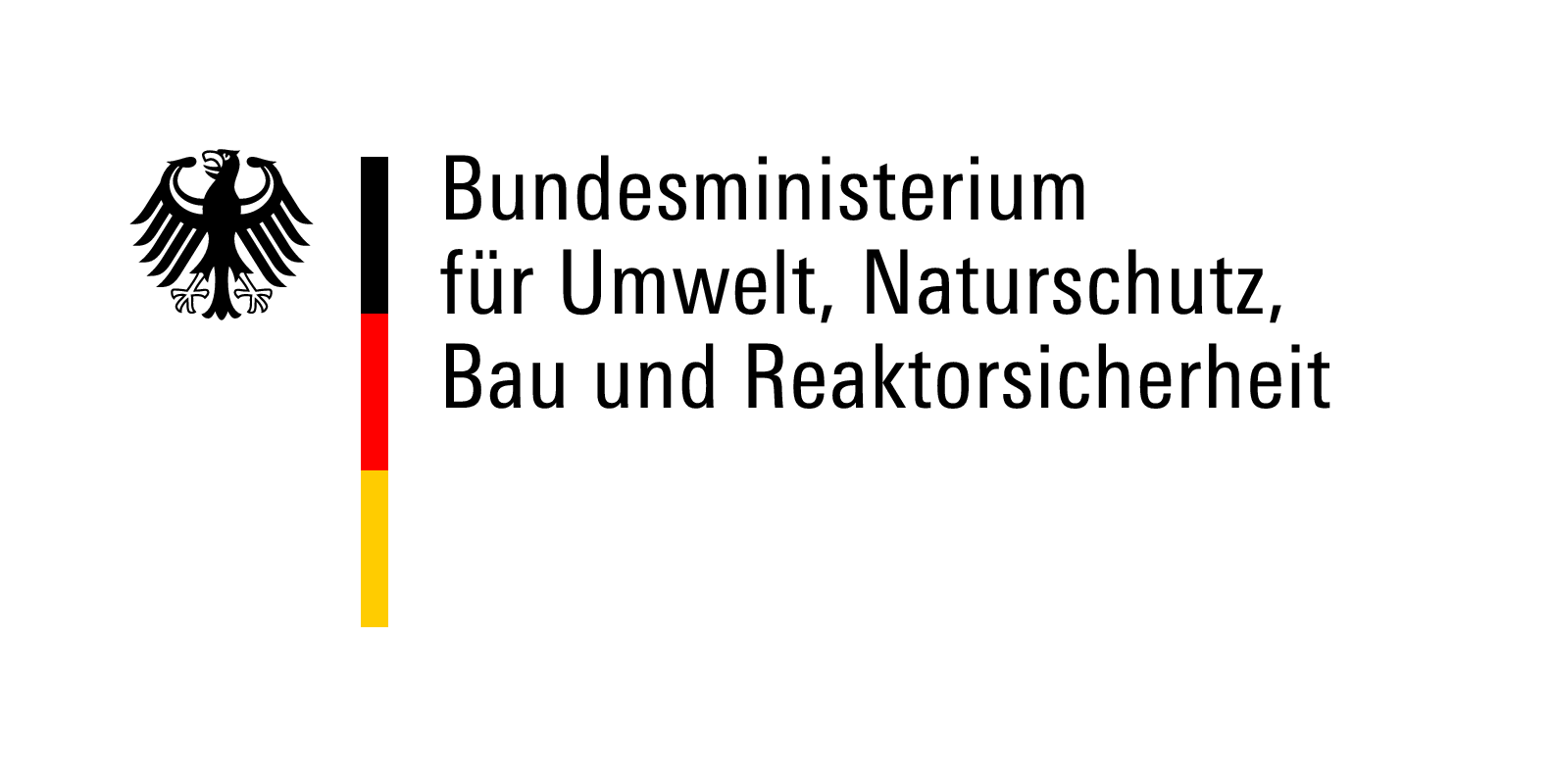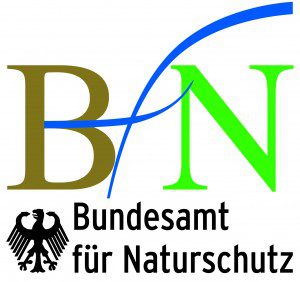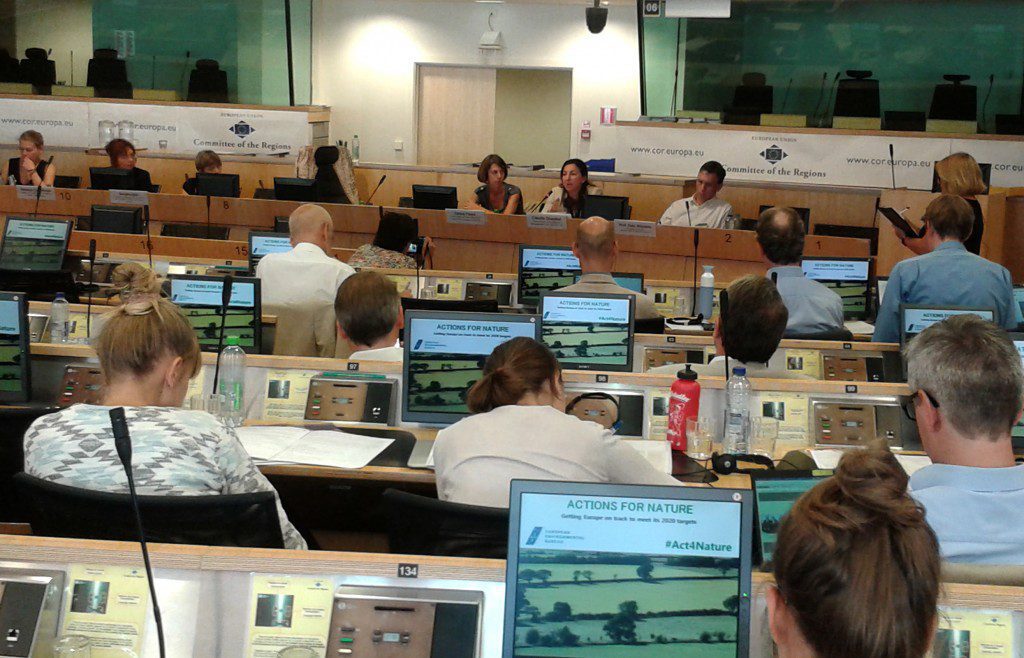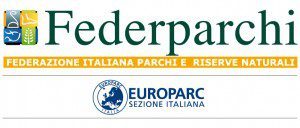Accessibility and inclusion in Parks- EUROPARC Germany
Accessibility in Parks © Tobias Wiesen
The German park staff were invited by the Donau-Auen National Park and Gesaeuse National Park as well as by the Purkersdorf and Kaunergrat Nature Park from the 4th to the 10th of September 2016. Besides the insights gained by visiting best practice examples of the mentioned parks, the participant’s and host’s main benefit of the trip was the possibility to discuss successful concepts and measures in the field of accessibility and inclusion of people with disabilities with other professionals and colleagues.
Several new ideas and suggestions were given to the German participants, e.g. relating to an off-road tour especially for blind and partially sighted people, to the “Swiss-Tracs” – an off-road towing device for wheelchairs – and to a Rolli Road Book with tour instructions for wheelchair user. In return, the German participants could give detailed advice based on their own expertise.
For 2017, EUROPARC Germany is planning four study trips for European park staff to visit best practice protected areas in Germany in the areas of
- regional development and sustainable tourism
- accessibility and inclusion of people with disabilities
- education for sustainable development
- park management.
Selected German parks will give insight into their work and serve as forum for a professional exchange with the participants.
Opportunity for Park Staff
If you work for a protected area as payed or volunteer park staff and are interested in transboundary exchange, EUROPARC Germany invites you to seize this special opportunity and to apply for participation. For more information please contact EUROPARC Germany, Ms Anne Schierenberg.
The project is financed by the German Federal Agency for Nature Conservation (BfN) with funds of the German Federal Ministry for the Environment, Nature Conservation, Building and Nuclear Safety (BMUB).


Bialowieża Forest still under threat
Bialowieza Forest, Poland
A unique piece of nature
The Białowieża Forest, along the Polish-Belarusian border, is one of the last vestiges of the immense primeval forest that once stretched across Europe. Today it is a National Park of about 63.000 ha that includes a large Natura 2000 site involving Special Protection Areas (SPA) and Special Areas of Conservation (SAC). The forest is also a designated UNESCO World Heritage site, it hosts several natural habitats of community interest like the east European oak-hornbeam-linden mixed deciduous forest Tilio Carpinetum, and is home for a large number of species listed in the Annex II of the Habitat Directives. Among these species, the European bison, the Saproxylic beetles, the Three-toed woodpecker, the White-backed woodpecker and some owls are present, and all of them are strongly dependent on the maintenance of the natural forest.
Logging as a management solution?
Sadly, some months ago Polish authorities revised the management plan of the area, authorizing logging in Białowieża forest despite strong protests of local and international organisations. Considering the crucial importance of the site, the European Commission has launched in June 2016 an infringement procedure against Poland over the tree-clearing in the site for breaching the EU Nature Directives. The UNESCO and IUCN are also assessing the situation at the moment.
The Polish government justifies the initiative in order to prevent the damage caused by the Spruce bark beetle, to protect tourists and rangers from harm by cutting down trees that risk falling on trails, to open free areas to encourage new species and the biodiversity and to let local communities to exploit natural resources. Those reasons were recently reiterated at the European Parliament, by the Polish Minister of the Environment for the opening of an exhibition on the Białowieża Forest.
EUROPARC is working in close cooperation with the European Commission, IUCN and other environmental organizations in order to ensure that the forest and its natural processes can be preserved. EUROPARC is also keen to support the Białowieża National Park authorities offering expertise and encouraging the exchange of case studies and best practices with other Protected Areas across Europe that are successfully managing ancient forest and Natura 2000 sites.
Natural regeneration process example
An example of natural regeneration can be found in the Bayerisch Wald National Park in Germany, where after suffering the Spruce bark beetle effects, the forest recovered following a natural process with little human intervention and no logging being undertook. The images below show the natural evolution of the Bayerisch Wald forest after the plague.

Actions for Nature – Conference
On the 14th of September, dozens of experts and organisations that work every day for a “fit” EU biodiversity policy, gathered at the Committee of the Regions, Brussels. How to make EU policies suitable for our actual needs? Where are the opportunities? What are the solutions for the problems we face? The EUROPARC Federation was one of the organisations present there, representing the view of our Protected Areas.
The EU’s target of halting biodiversity loss by 2020 remains a serious challenge. Europe’s biodiversity continues to be dangerously eroded through habitat loss, pollution, over-exploitation of resources, invasive alien species and climate change.
The “Actions for Nature Conference”, organised by the European Environmental Bureau (EEB) and host by the Committee of the Regions, brought together 20 speakers and 14 panellists from NGOs, the European Commission, Member States, and the private sector to discuss how targeted, well-crafted and well-enforced policies can help reverse this trend.

Mr. Daniel Calleja Crespo, DG Environment General Director, confirmed the key role of the Natura 2000 Directives in the EU policies for biodiversity and the determination to use the results of the Fitness Check process – that will be published in October – to improve the system. He also stressed that the awareness of the public is increasing, even if a lot more has still to be done in that direction.
The Conference analysed several aspects in 5 Thematic Sections:
- “Better enforcement of EU environmental laws”,
- “Better implementation and management of Natura 2000”,
- “Scaling up financing for Natura 2000 management and restoration”,
- “Addressing pressures on biodiversity from agriculture”,
- “Addressing pressures from fisheries and energy on marine biodiversity”.
All presentations are available at http://www.eeb.org/index.cfm/news-events/news/actions-for-nature/
Periurban Agricultural Parks for climate change mitigation in the Mediterranean
Parc Agrari Baix Llobregat, Barcelona, Spain
EUROPARC was in Palermo, Italy, at the 3rd Edition of the Mediterranean Environmental Festival “festAmbiente Mediterraneo”, organised by Legambiente – the largest environmental NGO in Italy.

Teresa Pastor, EUROPARC Project and Policy Development Manager, participated in the debate “The Mediterranean and the challenge of an agriculture able to adapt to climate change and to strengthen local communities and jobs”. Teresa talked about the important role played by the typical Mediterranean agro-forestry mosaic in biodiversity conservation and introduced the concept of Periurban Agricultural Parks, as a means of preservation of productive agriculture in metropolitan areas, where agricultural land is vanishing in favour of urbanisation.
The debate, that took place on the 17th September, was conducted by Giuseppe Barbera, professor at the University of Palermo and the conclusions were drawn by Mimmo Fontana, coordinator of Legambiente Southern section. Other interesting keynote speakers showed perspectives from across the Mediterranean area:
– Ali Abaab from Alternatives Tunisia highlighted the important social role played by agriculture in Tunisia (10% of the active population) and showed his concern about the lack of water, a resource that is further diminishing with climate change.
– Camile Derioz, from France Nature Environnement, thinks that cooperation is needed between the North and South Mediterranean shores. Countries in the South already know how to adapt to global warming. In the North, agriculture land should be reorganised into multifunctional areas and turn into sustainable production.
– Khalifa El Ksseyer, from Assocation Eau et Energie pour Tous – Marroc, pointed to the lack of (clean) water as one of the more pressing problems, which is exacerbated by climate change. Due to lack of rain, there is a deficit in cereal crops.
Legambiente has promoted the constitution of the Environmental Alliance for the Mediterranean , an alliance between non-profit environmental organisations from Mediterranean countries. The act was closed by an interview to Antonello Cracolici, Agricultural Councellor of the Sicilian Region.
 On Saturday 17th September morning, within the same Festival framework, it also took place a Meeting of Federparchi – EUROPARC Italy, chaired by Giampero Sammuri.
On Saturday 17th September morning, within the same Festival framework, it also took place a Meeting of Federparchi – EUROPARC Italy, chaired by Giampero Sammuri.